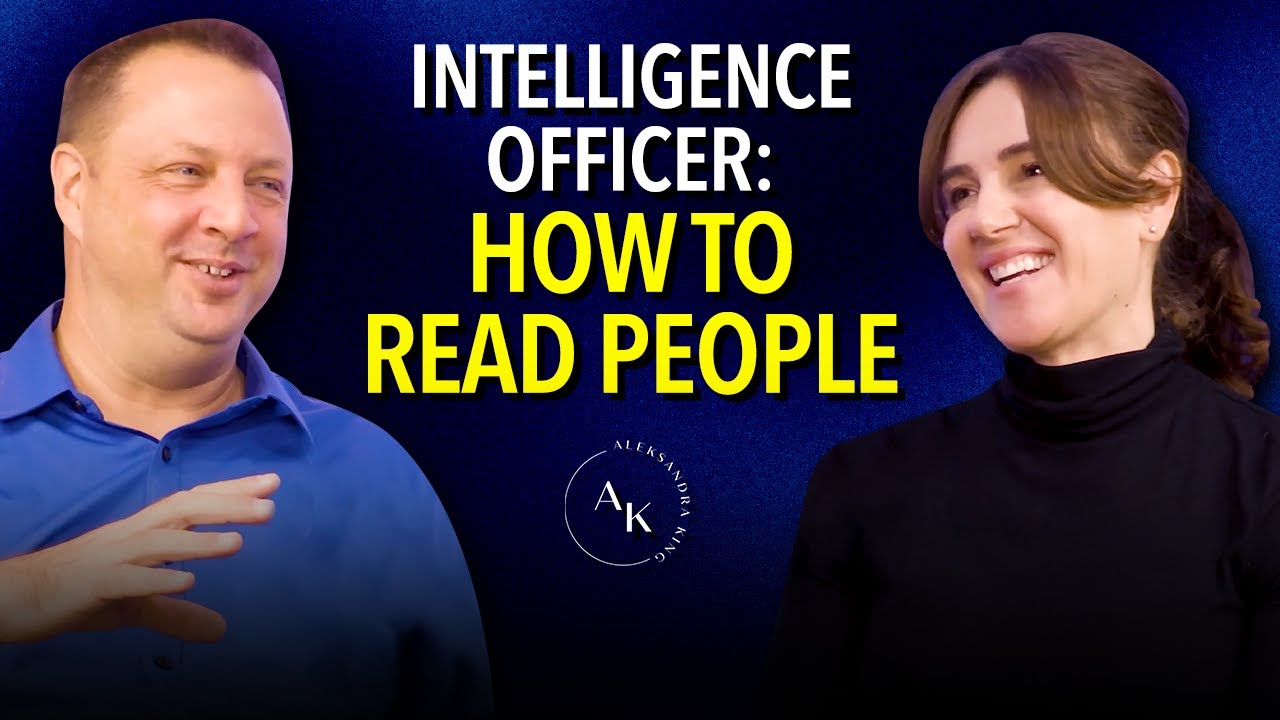Gavin Stone | Master the Art of Reading People: Ex-Intelligence Officer's Top Cues to Trust and Deception

Former intelligence officer and communications expert Gavin Stone sits down with podcaster, YouTuber, speaker, influencer, media commentator Aleksandra King on the Beyond the Boardroom podcast to decode the non-verbal world. Drawing on his experience tracking spies and advising CEOs, Gavin shares the top skills you need to become a master at quickly and accurately reading others.
The Biggest Body Language Myth: One Cue, One Thought
Gavin Stone debunks the most common misconception about body language: that one movement equals one thought
- A cluster consists of three or more simultaneous tells
. - If you see fewer than three, discount it entirely
. .
"There’s no one thing that gives away, uh, a thought or an action or, or anything else. It's what you're looking for is clusters"
.
The Science of Stress: Blink Rate and Breathing
If you only had 60 seconds to learn a single trick to read people, Gavin recommends focusing on:
- Blink Rate: Blink rate changes directly in response to stress
. . . . - Breath Location: A person's breathing pattern reveals their level of comfort
. Belly breathing may indicate a person is generally more relaxed while chest breathing is associated with nerves or excitement .
Building Credibility: The Power of Slow Movement
A fast, rapid pace instantly weakens your credibility and authority
- Predators (like a tiger) move with steady, controlled movement
. - Prey scatter, look around, and have very quick, sharp, snappy movements
.
To communicate calm authority, take charge of the room by doing everything a little bit slower: talking slower, breathing slower, and walking slower
The Linguistic Red Flag: Avoiding Denial
When asked a direct question, listen carefully for whether the subject actually issues a denial.
-
If someone asks, "Have you had my wallet?" a response like, "I haven't even seen your wallet" or "I don't know where you keep your wallet" is not a denial
. -
They've pacified you with a statement but haven't directly answered the question with a "no," which is a key linguistic red flag to watch for
.
Key Takeaways
- Baseline People: You must first establish a baseline of what normal behavior looks like for an individual in a specific situation before you can spot a deviation
. .
Interested? Watch the full podcast on the Aleksandra King Youtube Channel or read more about Gavin Stones SPYQ training.


